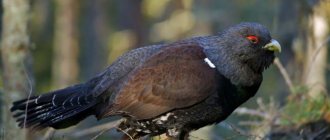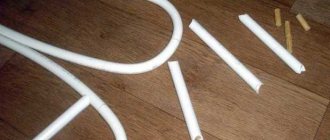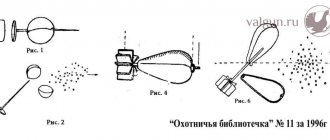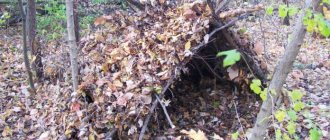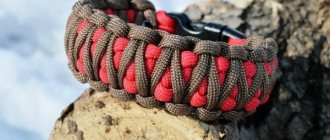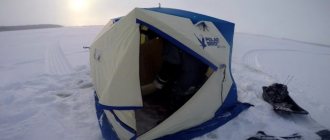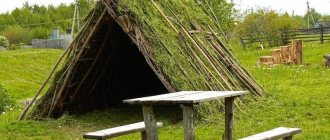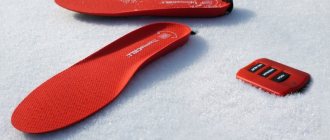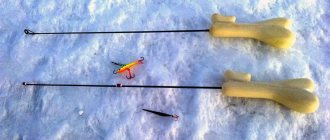Types of Bird Traps
Types of traps vary in design and the birds they catch.
Networks. You need a fine mesh net that is stretched between the trees. It is best to stretch it where the birds spend the night. If there is no net, you can use a thin cord and stretch it crosswise where the birds usually fly. The string will be able to knock down the birds when they fly along their usual route.
net
Birdlime. Despite the name, this method has been used by humanity for a very long time. Leaves of holly or arrowhead are boiled in water. Grain, which contains a lot of starch, is also added. The mixture should be simmered over low heat until it becomes sticky. This mixture should be used to lubricate branches and other places where birds perch. When they arrive, they will stick in this mass and will not be able to fly away.
glue
Hanging loops. There are several loops across the water flow. It is best used in reeds or reeds.
Hanging loops
Stick with loops. Several loops with a radius of about a centimeter are tied to a long stick. They need to be placed next to each other. Horsehair is best, but any thin, strong rope will do. This stick is placed in the night roosting area of the birds with the loops facing up. When birds land on it, the loops tighten. If you wait and don’t take out the stick after the first catch, it will attract others. This way you can catch several birds at once.
Stick with loops
Trap with locking lever and bait. This mechanism is used with a falling cage, which can be constructed from scrap materials - branches and grass. The cage should be balanced over the bait. If you are catching a small bird, you can make a cage in a quick way, when all the rods are placed in the position necessary to create a lid, two more rods are placed on top, and tied to the bottom layer so that they can maintain their position. If the animal is larger, such a trap will not hold it; you need to tie all the rods together. If you have a box or jar of suitable size available, you can use it. You can also tie a support to a rope or cord. And when the bird flies to the bait, pull it.
We recommend reading: British cat: description, how it differs, what to feed, content
Trap with locking lever and bait
Mesh trap with trigger mechanism
The corners of the net should be tied to a lever, which can be a tilted tree. The locking heather is held by the release lever, which is hooked to a crossbar parallel to the ground. The role of the locking lever is played by a flat crossbar on which the bait is scattered. It should barely touch the ground and rest against the base of the trigger lever.
Mesh trap with trigger mechanism
other methods
A fairly ancient method of catching birds, used by the Indians, is the following:
- In an open area where flocks of birds often gather, a two-meter log, sharpened on both sides, is installed.
- Closer to the top of the log you need to drill a hole and insert a perch about 20 cm long into it.
- Thread a rope into the same hole and tie a stone to one end. Make a tightening loop from the second end of the rope and leave it lying on the perch. You need to tie a knot on it so that it maintains its horizontal position.
This is interesting: The fisherman needs to get ready - not only to gird himself, but also to wear clothes for winter fishing
The principle of the trap is this: the bird will not be able to sit on the pointed end of the log, but will sit on a perch, which will be shifted by its weight. After this, a knot of rope will slip into the hole, tighten the noose under the weight of the stone, and the bird will be caught.
- Catching birds on hooks. To do this, you need to take several strong fishing hooks and attach food to them - plant food for ordinary species and animal food for predators. After this, the hooks need to be hung in places where the flocks are most concentrated. Having swallowed the hook, the bird will not be able to free itself from it. This method is most effective for preying in winter, since there is little food for birds in the forest.
- You will need a knife, fishing line and thin long rods, from which you need to weave something like a platform. The twigs are tied together with fishing line for structural strength. Next, you need to choose a place to install the trap, for example, near fresh crops or young shoots. Here you need to dig a hole to such a depth that the bird cannot get out of it, but less than the area of the twig cover. To support the platform, you need to take three branches and make notches on them with a knife. The first of them is inserted into the ground, the second clings with notches vertically in relation to the ground. The third is placed at an angle of 45 degrees as a support for the resulting cruciform structure. One of its ends should support the rod cover. You need to place a bait on the edge of the vertical bar, and when the bird takes it, it will touch the structure and slam the lid.
Expert opinion
Tarasov Dmitry Timofeevich
Master of Sports in mountaineering. Author of scientific articles on the topic of survival in the wild
To make it clearer, you need to watch how to make a bird trap in the video. Detailed instructions will help to clearly explain how to obtain birds for food or study.
In the wild, it is almost always necessary to look for food. If in a familiar urban environment few people think about how to get food, then in the forests, when food supplies have come to an end, this is the main, vital question.
The easiest way to get meat, and along with it protein, is to catch a bird. This meat will help you survive for weeks and months.
To hunt, you will need a trap that you can make yourself.
How to make a trap for wild animals
First of all, before choosing a trap and before making it, you need to decide what animal to catch. Each species reacts differently to the same situations. For example, rats, mice, rabbits and squirrels are considered easy prey. Because their habits are constant and their behavior is predictable. You can find the home of such an animal and place a trap near the entrance.
Several techniques can help in a successful hunt. Digging animals can be smoked out of their holes, birds can be lured with fresh fish. If fresh trails are discovered, traps should be set at night. The most successful traps will be those placed in areas where wild animals are butchered. Barriers must be placed on both sides of the trap. Sticks and branches can serve as the latter. When the barrier is built, you need to spray it with the blood and urine of the animal, this will kill the human smell.
In extreme conditions, hunting will help to feed and wait for help. For example, duck meat. It is very nutritious, tasty and healthy. You can catch a duck without a gun. For example, on a hook. For this method you will need a knife, a fish hook, and fishing line. You need to find a body of water where ducks live, tie the bait to a tree or large snag. In this case, the fishing line should not be noticeable in the water. After the fish swallows the bait, you can use a fishing line to drag it to the shore. In the absence of a hook, a button will do; it works on the same principle.
Hinged lid method. This method is much more complicated than the first, but with its help you can catch a living and unharmed duck. You need to fasten several logs together and secure a basket on top. You need to place an openable lid on the basket and pour food onto it. The lid should only open in one direction. The bird sits down to eat the bait and falls into the cage. The same method allows you to use a basket instead of a cage.
Author of the publication
offline for 2 weeks
Nika
69 I am interested in hiking and traveling, photography and videography. I have been going hiking since childhood. The whole family went and went - sometimes to the sea, then to the river, to the lake, to the forest. There was a time when we spent a whole month in the forest. We lived in tents and cooked over fires. This is probably why I am still drawn to the forest and, in general, to nature.
We recommend reading: Features of breeding
If you think that a partridge can only be caught by shooting it with a gun, then you are mistaken. This method is, of course, the easiest, but is only suitable when you are going to eat a bird or a hare. But if you need it for breeding, then you need to know other, more humane ways of catching it.
Traps, poisons and baits for animals
Not all predators rush at their victims like a lion at an antelope. Animals have mastered many other, no less effective methods of hunting, sometimes showing amazing ingenuity.
A small drama plays out in the Madagascar forest. At first glance, the chameleon sitting on a branch appears to be sweetly dozing. But his eyes slowly rotate in different directions. He slowly raises his leg and seems to freeze in indecision, but soon lowers it and again grabs the branch, swaying slightly from side to side. How does such a slow animal manage to catch agile insects?
On the tip of the tongue
Suddenly, the chameleon opens its mouth and with lightning speed throws its unusually long tongue far forward, but immediately pulls it back into its mouth - with insects stuck to the sticky tip. The entire operation takes a fraction of a second. Having eaten the prey, the chameleon continues its leisurely path along the branch. The chameleon's tongue is comparable in length to its entire body and, when at rest, is neatly curled in its mouth. The eyes can rotate in different directions independently of each other, allowing the chameleon to very accurately estimate the distance to the prey. The largest in the family, the giant chameleon, living in Madagascar, reaches a length of 70 cm and sometimes catches even small birds with its sticky tongue.
Deadly Teeth
Many species of snakes have poisonous teeth. They help predators, when biting, inject dangerous, often fatal poison secreted by poisonous glands into the body of the victim or enemy. When a snake sinks its teeth into its prey, the venom is forced out of the glands and flows into the wound through special channels in the poisonous teeth.
The venomous teeth are usually located in the front of the upper jaw and are able to move forward, allowing the snake to quickly plunge them into the body of the victim. Some snakes have poisonous teeth located at the back of their mouth. This applies, for example, to the common lizard snake, which lives in southern Europe and whose bite is dangerous for small animals, but not for people. Even if this snake grabs a person’s arm or leg, its poisonous teeth will not reach the skin.
Read: Jackal
Deadly Embrace
Many non-venomous snakes kill prey no less effectively than poisonous ones: they strangle the victims with the coils of their body. Boas and pythons are especially successful in this. Having grabbed the prey with their jaws, these large snakes quickly wrap their flexible bodies around it and tighten its chest with such force that the animal stops breathing. But such death occurs relatively slowly. The snake feels even a weak heartbeat and loosens its grip only after it stops beating completely. The largest boas - anacondas - reach a length of 6 m and weigh more than 200 kg! It is not surprising that they sometimes attack even such large animals as jaguars and caimans.
Dramas at sea
Anglerfish living in the depths of the sea lure prey with a special growth on their head. This outgrowth hangs over the mouth and resembles a fishing rod, which is why the fish got their name. When a small fish approaches, the angler moves the bait at the end of the “fishing rod”, which resembles a small worm. When the fish tries to grab the “bait,” the angler sharply pulls the rod back and grabs the victim with a wide-open mouth with sharp teeth. For some anglers living in the abysses of the sea, where eternal darkness reigns, the thickening at the end of the fishing rod emits light. This glow also helps predators lure in prey.
Spiders on the hunt
Many invertebrate predators have also “invented” various ingenious methods of hunting. Tropical Dinopis spiders cling to their web with their four hind legs, and in their four front legs they hold a small “net”, also woven from a web. The spider deftly throws it on flying flies and other insects.
Read: How animals use ultrasound
Mastophora spiders living in South and North America catch insects with a web with a sticky liquid at the end. This “tool” is similar to a bolas - a hunting throwing weapon among the Indians and a number of other peoples, consisting of one or more belts, to the ends of which round stones wrapped in leather are attached. However, most spiders prefer to weave trapping nets from their webs and wait patiently until the victim becomes entangled in them. Some of these orb-weaving spiders hide next to the trapping net, but thanks to the cobweb connected to the net, they catch its slightest vibrations caused by the prey caught in the trap.
Predatory insects
Thanks to their green coloration, mantises are perfectly camouflaged among the vegetation where they wait for their victims. It is difficult for prey insects to notice the predator's deadly front legs, tightly folded at the chest. A cricket or grasshopper that mistook a mantis for a green leaf will immediately be squeezed between the spiny thighs and legs of the mantis and crushed by its powerful jaws. The armament of some insects is even more bizarre than the “pincers” of the praying mantis. Earwigs have a movable, serrated fork at the end of their abdomen. Having caught the prey with its front legs, the earwig bends its abdomen, clamps the prey with a fork and, holding it in this way, eats it.
Voracious dragonfly larvae grab their victims with a special device called a mask. This is a modified lower lip, which in some species can be thrown forward by more than 1 cm. The prey is pinched between two movable blades of the mask. It acts like a chameleon's tongue: it allows the dragonfly larva to catch victims without approaching them closely.
Tropical forests are home to a wide variety of firefly beetles. Representatives of each species emit light in the form of flashes of a certain frequency and intensity, which helps relatives find each other during the breeding season. The females of some fireflies are able to imitate the light signals of other species in order to lure “alien” males and eat them.
Read: Herrerasaurus
Many other insects are also involved in predation - ladybugs, dragonflies, some bugs, lacewings, camels, etc. Predatory Ktyri flies have a slender body, a pair of strong wings, huge keen eyes and a hard piercing proboscis. Ktyrs, like dragonflies, catch their victims (other insects) in the air, but they prefer not to chase prey, but lie in wait for it, sitting on branches and leaves. Having noticed the victim, the ktyr instantly takes off into the air, injects poisonous saliva into the victim’s body with its proboscis, returns with the prey to the branch and there begins to suck out its contents. Thanks to their strength and agility, ktyrs emerge victorious in fights even with such large and well-armed insects as wasps, bees and some beetles. The larvae of moths are also predators. They live in the soil, where they prey on the larvae of other insects.
Deadly Funnel
Adult antlions resemble slow-moving, fragile dragonflies with long antennae, but their larvae are unlike any other insect. A thick larva with a huge head, armed with powerful jaws, digs a funnel up to 5 cm in diameter in the sand and hides in it, sticking out only its jaws. Ants and other insects crawling past slide into this pit to meet the deadly jaws. At the same time, the antlion turns its head, throwing grains of sand at the ant and preventing it from getting out of the funnel.
Science knows about 2000 species of antlions. In some species, the larvae do not dig craters in the sand, but hide among stones or dry leaves, sticking out only their jaws, with which they quickly grab insects crawling by.
How to catch a partridge?
The most popular method is trapping. This option is used to catch several individuals at once. They make a small pen out of a net, put bait there and wait for prey. Partridges often forage in groups and it will be fairly easy to catch them all at once.
The matter requires patience and perseverance. After all, in an ambush you will have to wait a lot of time until the partridges peck at the gift. There is another simple and similar method. A feeder is placed and a net is hung on top. As soon as the bird approaches the feeder, the hunter, pulling the rope, covers the birds with a net.
Regardless of the time of year, the bird is very difficult to spot. First you need to figure out where the flock is. In winter, partridges love shrubs, dwarf birches, and willow thickets. Such plants are found nearby in valleys, not far from rivers.
In summer the bird can be found in tall grass. The main thing is to be quiet and careful, because these are very shy birds.
Fishing with a gun
If you have a dog, a gun and a desire, then feel free to go partridge fishing. It is easier to catch a bird this way in late summer or autumn, when flocks of partridges live close to agricultural fields.
The bird will not let a person get close and will fly away at the slightest fright, so catching it with a gun is a difficult task. It is best to break up the group so that they hide in the grass one at a time. The main thing is not to hesitate so that they do not gather together again.
Buy a kite in the shape of a hawk and fly it into the sky if the partridges won't let you near them. They will get scared and stop flying high. It will be easier to hit the target, but this also requires training and skill. Therefore, most often partridges are hunted without weapons, using simpler methods.
Fishing with a loop
How to catch partridge with a noose? The simplest trap, which is suitable for any time of year and a large bird, because it is not the size of a tit, so the likelihood that it will fall into the trap is high. Fishing line is a suitable material for the loop. The bait will be bread or grain. At the end of the fishing line, make a loop of about five millimeters, tie a thread at the other end, secure it and hide it.
We recommend reading: On February 3, 1815, the world's first industrial cheese factory began operations
In winter, this method is more fruitful and accessible. Make a hill of snow, place willow branches along the edges, and place a loop in the center. Leave a passage in the branches through which partridges can pass for food. Up to three hundred such traps can be placed per day.
Partridge snare
Snares are easy to make with your own hands. You will need copper wire with three strands. Make the diameter at least twenty centimeters, and the length of the mount up to half a meter. This trap is often used to catch a hare. Install it on a snowdrift or in thickets. Place fences of twigs at a distance of two meters. Place snares on the fences. The birds, looking for food, will fall into the trap, and the hunter will be happy. You can set many such traps in a day.
Catching partridge with nets
This method is the most favorite among hunters, because it is not a simple placement of traps, but hunting. You can catch more than a dozen birds at a time.
For such fishing you will need several people, a seven-meter net made of silicone or nylon. The cells in the network should not be large.
- Place poles and rope spreaders to position the net correctly.
- Set the bottom edge no higher than one meter above the ground. The top edge is no higher than six meters.
- Once set, move about one kilometer away from the trap. Spread out in a semicircle and chase the birds towards the net.
- The partridges will get scared and run away from people straight into the trap. The paws will become entangled in the meshes of the net.
- All you have to do is unravel and take the loot.
For an even more successful hunt, move away not in the center, but along different edges of the net, so as not to disperse the birds too far from the trap.
Catch a partridge with a bottle
Great DIY trap. This method is used to catch wild birds only in winter. This is the most humane way. It is suitable for people who catch partridges for breeding. Because the other methods described above can cause injury to the bird. To hunt with a bottle, you will need snow and plastic containers. Grains and berries are suitable as bait.
Don’t forget to take a snack and a hot thermos with drink in winter, because catching a bird can take a long time. Do not leave the partridge in the trap for a long time so that it does not die there.
- Cut the bottom of the bottle three-quarters of the entire length.
- Stick a container into the snowdrift and pour hot water into it.
- As soon as you remove the bottle, you will see a hole formed with frozen edges. Sprinkle it with snow and place bait on top.
- The partridge will peck the food and remain in the hole, because its edges are very slippery, and it will not be able to spread its wings.
- The hunter will only have to go to all the trap sites and collect the birds.
Stick trap with loops
When packing a backpack for hunting, take care of strong ropes. You can use them to catch birds.
Find a large, strong stick. Secure its 2 ends between the trees. Now take the rope, secure it to a stick and create self-tightening loops. Now you know how to make a trap for birds that live on rivers and lakes.
It is not suitable for large game, but hunting can be done for medium and small sized birds.
When going on a hike, don't forget about a waterproof cover for your backpack. This is a small accessory that will help keep everything dry. Even if you have a box of matches in your backpack that you did not protect with an additional bag, using a cover will help you keep everything you take with you and survive in the wild.
This is interesting: How to tie leashes to the main line on spinning, bottom, and float tackle
We have brought to your attention only a few traps for catching birds. In fact, there are many more of them. Now you have before you the most practical and popular methods. They may be useful to you even when you did not plan to hunt birds.
However, in order not to get confused in an unforeseen situation, in order to perform precise steps to create a trap, we recommend that you practice in an urban environment. Try to make a trap yourself, catch the birds, release them. This will give you confidence when catching birds in extreme wild conditions.
Summer residents have a mixed impression about wild birds. Such birds help fight pests that settle on the surface of the bark and hide under it.
However, they do not leave the harvest untouched, which flaunts on the bushes and branches. If the damage from birds is significant, you need to place traps in the area.
You can make them yourself, there is nothing complicated in this matter.
